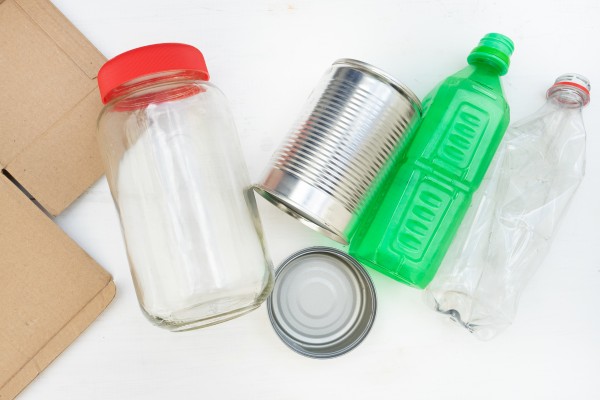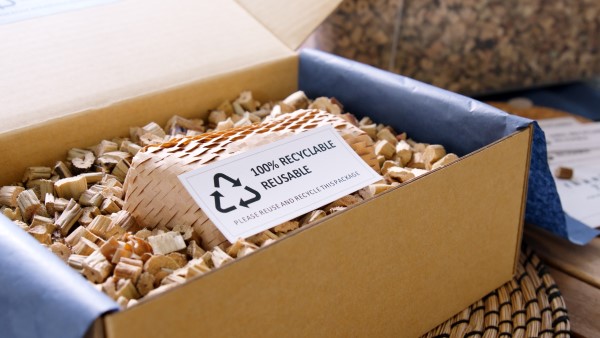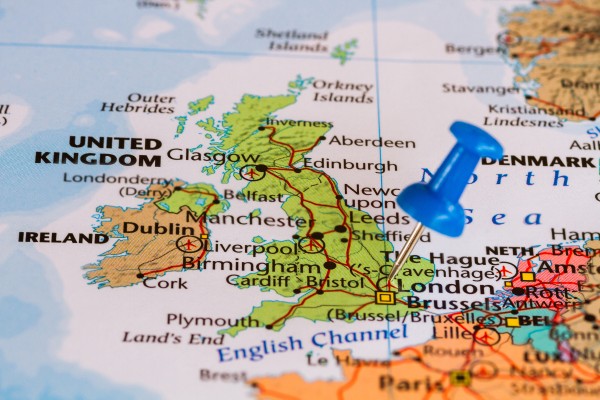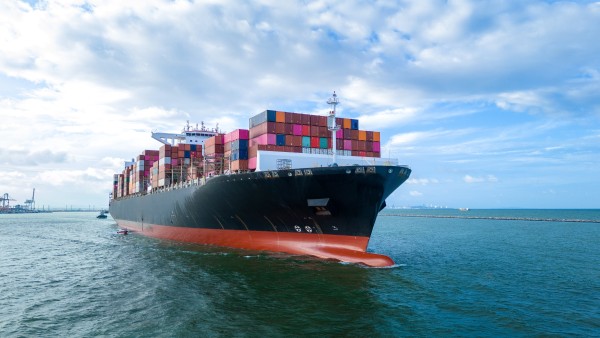Kite blog
Your Guide to Collecting Packaging Data for Extended Producer Responsibility
Reporting data for EPR – what packaging information do you need to collect under the scheme?
If your business handles packaging in the UK and is classed as a ‘small’ or ‘large’ organisation, you must report packaging data under the forthcoming Extended Producer Responsibility (EPR) regulations.
With so much information floating about – and much of it still to be confirmed – getting to grips with the new obligations may feel overwhelming, like sitting an exam you didn’t study for.
As a packaging supplier that reports under EPR and runs our own government-accredited EPR compliance scheme, we can tell you that collecting accurate data is the first step you can towards ensuring compliance. This includes gathering information on:
- Packaging base material
- Packaging type
- Anticipated end-of-life waste stream

When and what data you report will depend on whether your business falls under the ‘small’ or ‘large’ organisation category. While ‘large’ organisations must submit packaging data every 6 months, ‘small’ organisations will only need to do so every 12 months. The Scheme Administrator will use this data to determine what modulated fees to charge businesses to cover the cost of recycling household packaging waste. These fees are yet to be finalised, but you can find rough estimates for these in our Extended Producer Responsibility in UK Packaging blog, under ‘Fees’ along with a range of other useful information on the new regulations.
This reporting for EPR guide outlines everything you need to know about the current and anticipated requirements for submitting your EPR data so you can do so with confidence.
Contents
- Packaging waste regulation changes
- pEPR information categories
- Packaging base material
- Packaging class type
- Packaging waste type
- Nation data
- Exports
- EPR reporting frequency
- Submitting your information
- Summary
Packaging Waste Regulations vs Extended Producer Responsibility for packaging – what has changed?
Since its initial rollout, Extended Producer Responsibility for packaging (pEPR) has caused widespread confusion. A mix of unclear guidance, shifting deadlines and requirements that are still changing have businesses feeling like they've been left in the lurch navigating EPR. It's no surprise Google reports a search volume of over 20,000 for EPR-related queries in March, as many try to make sense of the array of information available across the internet.
This section breaks down the key similarities and differences between the Packaging Waste Regulations 2007 and pEPR to help you get a clearer understanding on how obligations may have changed for your business.
Obligation threshold
Where previously only businesses with a £2 million turnover handling 50 tonnes or more of packaging were obligated, EPR reduces that threshold, adding a ‘small producer’ tier. Now, those with a £1-2 million turnover, handling 25-50 tonnes of packaging are also accountable.
Who counts as a producer has also expanded to include brand owners, importers, packers/fillers, online marketplaces and more. Rather than splitting the responsibility across the supply chain, 100% of it lies with one party. This is usually the business that first places the packaging on the UK market or is legally responsible for the goods when they enter the UK.
Financial responsibilities and cost recovery
Before EPR, recycling costs were covered by PRNs (Packaging Recovery Notes) and PERNs (Packaging Export Recovery Notes), and local authorities picked up household collection bills.
Now, producers pay in two streams:
- PRNs and PERNs for recycling targets
- Local Authority Waste Management Fees, based on volume and recyclability of packaging. There are higher fees for hard-to-recycle materials, along with registration and admin charges.
Data reporting and compliance
Under the 2007 regulations, producers registered by 7th April each year, buying PRNs to meet targets, and filed a Certificate of Compliance by 31st January the following year.
From 2025 onwards, all producers must sign up on the government’s Report Packaging Data (RPD) portal. This single platform captures PRN obligations and new household waste management fees. While you can continue using a compliance scheme for PRNs, your business must register and pay any waste management fees directly through the RPD portal.
Collection and recycling targets
The old system let producers buy PRNs against EU-based material targets, with no collection or quality standards. EPR replaces this with UK-specific recycling goals up to 2030 for 6 main materials (plastic, paper/card, glass, aluminium, steel, wood), plus incentives for closed-loop recycling (e.g. remelting glass) and refill schemes starting 2025.
A Deposit Return Scheme for drinks containers, launching by October 2027, will remove these items from EPR waste fees.
Labelling and consumer communication
On-pack recycling symbols used to be optional under the Packaging Waste Regulations, with local councils handling recycling guidance. Now, the Scheme Administrator takes charge of national awareness campaigns.
A mandatory “Recycle”/“Don’t recycle” label was planned for 2027 but put on hold in 2024 to avoid delaying EPR. DEFRA has indicated it will introduce a standardised labelling scheme in separate future legislation.
Enforcement and penalties
Non-compliance rarely went beyond small fines or prosecution previously, especially if you held a compliance certificate. EPR tightens up enforcement with fixed penalties starting at £1,000 for minor breaches, rising to variable fines up to £3 million for serious offences.
The new legislation demands much stricter record-keeping and accurate data as regulators will audit submitted data and methodology.
EPR information categories
What types of data are you required to report?
Your business must collect and report detailed information in the following core areas:
- Packaging base material
- Packaging type
- Anticipated end-of-life waste stream
Packaging base material
What materials make up your packaging components?
Both small and large producers are required to report the weight (in kg) for each individual packaging activity. This is more or less the same as the former material reporting obligations.
Types of material include:
- Aluminium
- Fibre composite
- Glass
- Paper or cardboard
- Plastic
- Steel
- Wood
- ‘Other’
Composite, fibre composite & multi-material packaging

Composite packaging refers to packaging made from:
- Two or more different material types
- Materials that are not possible to separate manually
When dealing with this kind of packaging, you must report the total weight and classify it based on the primary material (the one with the greatest weight).
For example, a juice carton might include layers of cardboard, plastic, and aluminium. If cardboard makes up the largest portion by weight, the entire weight should be reported as cardboard.
Your packaging is fibre-composite packaging if:
- The main material is paperboard or paper fibres
- The main material is laminated with plastic
It may also have layers of other materials.
Multi-material packaging consists of separate components made from different materials. It qualifies as multi-material if the parts can be manually separated. For example, a glass jar with a metal lid – since you can remove the lid by hand, it's considered multi-material packaging.
For this type of packaging, you should record the weight of each material separately.
Other materials
‘Other’ materials includes anything that is not listed above. This could be any of the following:
- Bamboo
- Ceramic
- Copper
- Cork
- Hemp
- Rubber
- Silicone
You must now report on each of these separately and provide a weight for each material type.
Packaging class type
What purpose is your packaging used for?
This data will help determine the primary function of your packaging and is split into four categories:
- Primary packaging
- Secondary packaging
- Tertiary packaging
- Ecommerce or shipment packaging
Primary packaging
Primary packaging is any packaging that directly contains and protects a single ‘sales unit’.
For example, if you sell bottles of shampoo in a plastic bottle with a paper label, the primary packaging is the ‘plastic bottle’ and ‘paper label’.
If a sales unit is made up of multiple items, like a multipack, the primary packaging includes all the packaging. For a multipack of yogurts, the individual plastic pots and the cardboard sleeve holding them together all count as primary packaging.
You must report and pay fees for primary packaging under EPR. The proceeds cover the cost of recovering and recycling household packaging waste.
Secondary packaging
Next, packaging that groups together several ‘sales units’ for sale or transport – this is classed as ‘secondary packaging’.
For example, your business places a multipack of yogurt on a cardboard tray to group together multiple multipacks for transport or display on a retail shelf. In this case, the ‘cardboard tray’ is the secondary packaging.
Secondary packaging does not fall within the scope of the EPR as it does not end up in a household or public bin. This means you do not incur charges if you supply, handle or use this form of packaging. You must, however, still report this as part of your data requirements, and continue to purchase PRNs as previously.
Tertiary packaging
Tertiary packaging, or transit packaging, is used to bundle together multiple secondary packaging units for safe handling and transport throughout the supply chain.
For example, a business may pack a group of boxed skincare gift sets (secondary packaging) into corrugated cardboard outers, secured with plastic strapping and stacked on a plastic pallet for delivery to a retailer. In this case, the tertiary packaging is the cardboard outer, plastic strapping and pallet.
While tertiary packaging does not qualify for fees as part of the scheme, you must still report your usage and purchase PRNs to cover your recycling obligations. EPR excludes any shipping containers used in road, rail, sea, or air freight.
Ecommerce or shipment packaging

Any additional packaging that is added to primary packaging when goods are sold online or through a mail order and sent directly to a customer or designated collection point counts as ecommerce packaging.
If you sell a ceramic mug online, it’s first packed in a branded cardboard box (primary packaging). You then place that box inside a larger cardboard box with paper void fill for protection before shipping – these are both classed as shipment packaging.
This packaging ends up in household bins and is also subject to EPR reporting and fees.
Packaging waste type
Which waste or recycling stream does your packaging end up in?
- Household
- Street bin packaging
- Drinks containers
- Plastic bags
- Reusable packaging
- Self-managed waste
Household waste
If you’re a large organisation that has to report packaging under EPR, you need to determine whether your packaging is household or non-household.
This matters because the type of packaging affects how you report it and whether fees apply.
What do ‘household’ and ‘non-household’ mean?
Household (unless special rules apply):
- Primary packaging – the packaging around a single product, like a bottle of shampoo
- Shipment packaging, for example, a cardboard box used to send goods to a customer
When does primary of shipment packaging count as ‘non-household’?
- You send it to a business or public organisation that is the final user or removes all packaging before passing the goods on.
- The product is only meant for business or public use and the packaging is unlikely to end up in a household or public bin.
- You import packaging into the UK but throw it away yourself before anyone else uses it.
You must keep proof for all of this for 7 years. If you can’t prove it, you have to treat the packaging as household. Even if the waste is collected by a private service (not by the council), you still can’t count it as non-household unless one of the conditions above applies.
What counts as good evidence?
While the exact conditions for evidence are not yet known, uk.gov lists the following examples as a guideline for what you could use:
- Contracts or agreements saying your customer is not allowed to pass on the packaging.
- Sales records showing that packaging is always removed before the goods are passed on.
- Customer policies (with inspection reports) stating that they don’t supply the packaging further.
- Signed declarations from customers confirming they won’t pass on the packaging, backed by your own checks.
- Customer business info showing they use the product themselves (like a company that uses cleaning chemicals on-site), along with a signed declaration.
- Product details showing that the product is clearly meant only for businesses and not for household use.
However, this list isn’t exhaustive. You may need a mix of documents to prove your packaging isn’t household, and what’s acceptable will depend on the specific situation.
For packaging that is sold to both households and businesses, you must report it as household packaging. That is unless you supply it directly to a business or public institution that is the final user, and you have clear proof of this.
Packaging that ends up in public bins
EPR requires you to report the type of material and weight for certain types of household packaging that are commonly thrown away in public bins.
This includes:
- Takeaway food and drink packaging – like wraps, boxes, cups, cup-holders, bags and paper
- Confectionary packaging weighing under 230g, such as chewing gum wrappers and chocolate wrappers
- Tobacco and vape packaging for cigarettes, cigars, tobacco, e-cigarettes and refills
- Paper or plastic (cellophane) straw wrappers
- Packaging for crisps and other savoury snacks weighing under 60g
- Single-serve food packaging for ready-to-eat items like sausage rolls, sushi, sandwiches, biscuits and individual cakes
- Drinks cartons holding up to 850ml, ready to drink without dilution
- Drinks cartons holding up to 600ml, ready to drink without dilution
You only need to report this packaging in the public bin category – you do not have to report it again under household packaging.
It’s important to note that this list is updated regularly, and changes may be made at the end of each reporting year, so keep an eye out for this.
Drinks containers

Single-use bottles or cans that hold drinks and are made mainly from:
- Polyethylene terephthalate (PET) plastic
- Glass
- Steel
- Aluminium
They must also hold between 150ml and 3 litres, including if they are sold in multipacks.
Takeaway cups do not count as drinks containers.
Reporting parts like lids and labels
For drinks containers with parts made from other materials:
- For glass containers, report these separately as household packaging
- For PET plastic, aluminium or steel containers, include the weight of those parts in the total and report the container based on the main material
Reporting by business size
Large organisations must split drinks container data into:
- Household drinks containers
- Non-household drinks containers
Small organisations can record all drinks container data as household.
Plastic bags
Bags used at ‘point of sale’ will likely need to be reported, but there is still some uncertainty around other types of bags.
Defra is expected to clarify how to report carrier bags of certain thicknesses, small produce bags and paper bags.
Reusable packaging
If you’re a large organisation, you need to report reusable packaging the first time it is supplied. This data needs to be split into two categories:
- Reusable primary packaging, like a refillable bottle or glass jar
- Non-primary reusable packaging, like pallets or containers
Self-managed packaging waste
Large organisations must also report self-managed waste as one of the following:
- Consumer waste which could be packaging returned by consumers through take-back schemes
- Organisation waste collected from your own sites ( also called backhauled waste)
If you collect waste in one part of the UK and send it to another for recycling, you must report:
- Where the waste was collected
- Where it was sent for recycling
- The type of material and weight
For consumer waste, you only need to report what has actually been recycled.
Self-managed consumer waste
If you handle any consumer waste yourself, you can report it to reduce your household packaging waste fee.
There are two types of self-managed consumer waste you can include:
- Recovered packaging that local councils don’t usually collect
- Reusable packaging that has been reused at least once, but is now waste
Report the combined total of both types.
Nation data

Reporting nation data is another requirement of EPR, which means you must specify which nation your packaging is suppled and thrown away in.
You must submit this data if you also do any of the following:
- Sell or give packaging (empty or filled) to UK customers who will use and dispose of it
- Supply empty packaging to UK businesses that are small or not legally required to report under EPR
- Hire or loan out reusable packaging
- Own an online marketplace that lets non-UK businesses sell packaging or packaged goods to UK customers
- Import packaged goods for your own use and then throw the packaging away
Any packaging that you have imported and later discarded yourself is also included in this.
Exports
Do you export any of your packaging outside the UK?

EPR rules only apply to packaging used in the UK, so if you export any packaging or goods outside of the UK, you don’t have to pay any EPR fees for them or include them in your data reports.
This is different from the old rules, where you had to record and report this information.
EPR reporting frequency
When should you submit your packaging data?
How often you report data depends on your business size and activity.
Large organisations
If your business is a large producer, you must now report twice a year instead of annually, replacing the old annual system.
You must report both household and non-household packaging on the same form at the same time. EPR charges apply in addition to PRNs.
Small organisations
If your business has a £1-2 million turnover and handles 25-50 tonnes of packaging, you are exempt from EPR fees but must still submit one annual report. This will help contribute to a more accurate understanding of how much packaging waste we throw away in the UK, which is crucial for meeting national recycling and sustainability goals.
Submitting your information
To submit your packaging data, you will need to create an account on the government’s Report Packaging Data portal.
Using your EPR account
Within your account, you can:
- Add your organisation’s details
- Report packaging data
- Declare whether you use a compliance scheme
- Register with environmental regulators
- Accept or reject certain PRNs
Who can create an account
You can create an account if your organisation:
- Supplies packaging in the UK
- Imports and discards packaging in the UK
- Is a third-party, like a compliance scheme
Only certain job titles can register an organisation. These are limited to the director or company secretary, a partner, sole trader, or an LLP member.
However, you can invite others to your account and assign permissions to do things on your behalf in the account.
Submitting data
Before submitting data, your account must be approved by the environmental regulator, which can take up to 28 days.
Once approved, you become legally responsible for ensuring data accuracy. If you delegate this task to someone else, they must also be approved and will share the same legal responsibility.
Summary
Fulfilling your EPR obligations might feel like navigating an obstacle course blindfolded, but with the right guidance, Kite Packaging can help turn it into a straightforward step towards legal compliance.
If you have questions about your responsibilities under EPR or need support addressing non-compliance, our ‘Excellent’-rated EPR scheme and team of experts are here to help. Contact us on 024 7642 0080 or email
EPR@kitepackaging.co.uk for further guidance.
While some details in this guide may change over time, Kite Packaging believes the information provided is accurate at the time of writing.
